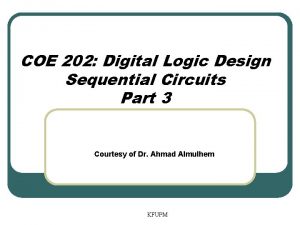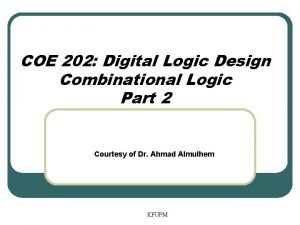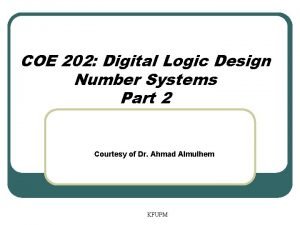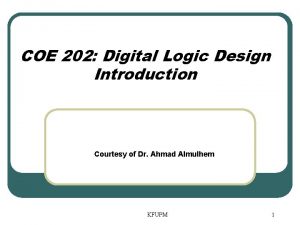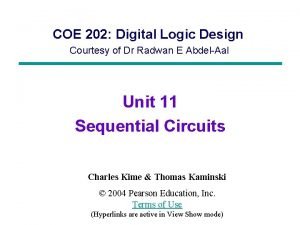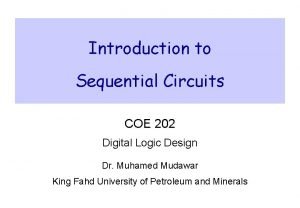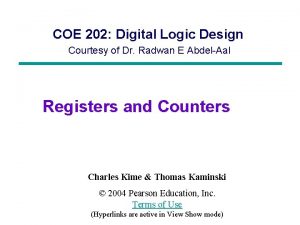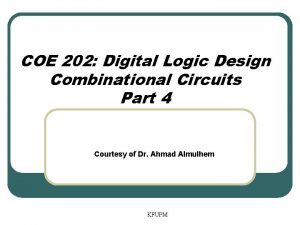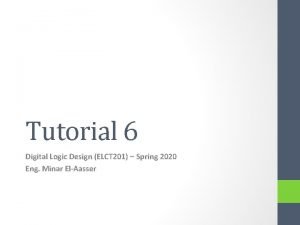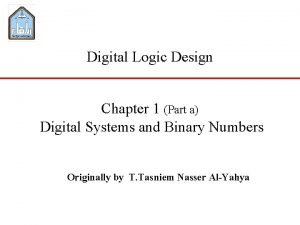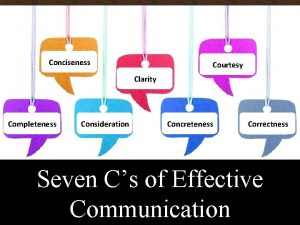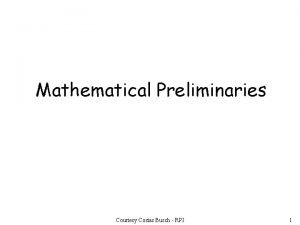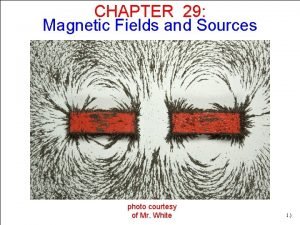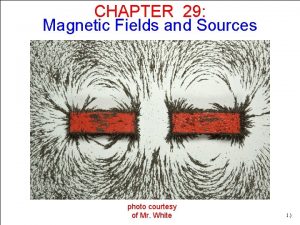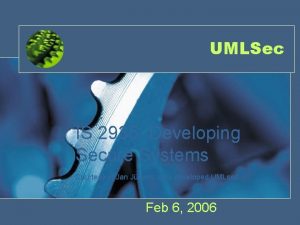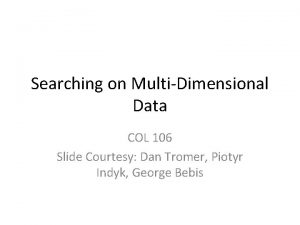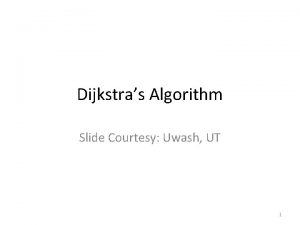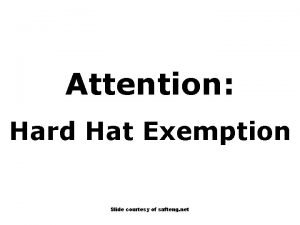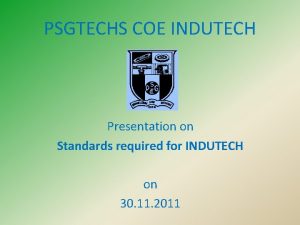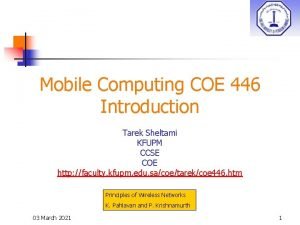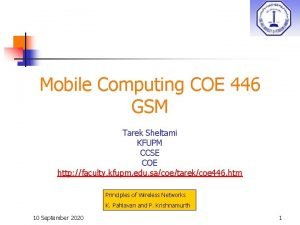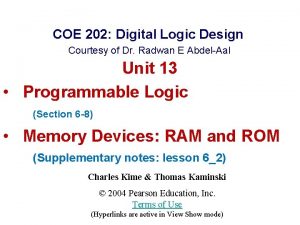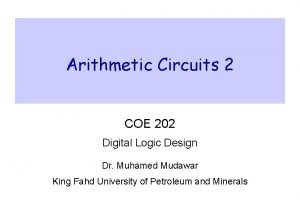COE 202 Digital Logic Design Courtesy of Dr































































- Slides: 63

COE 202: Digital Logic Design Courtesy of Dr Radwan E Abdel-Aal Logic and Computer Design Fundamentals 11 Chapter 3 Unit – Combinational Logic Design Sequential Circuits Part 1 – Implementation Technology and Logic Design Charles Kime & Thomas Kaminski © 2004 Pearson Education, Inc. Terms of Use (Hyperlinks are active in View Show mode)

Unit 11: Sequential Circuits 1. Sequential Circuit Definitions, Types of Latches: SR, Clocked SR, and D Latches 2. Flip-Flops: SR, D, JK, and T Flip-Flops 3. Flip-Flop Timing Parameters: Setup, hold, propagation, clocking 4. Flip-Flops: Characteristic and Excitation Tables 5. Analysis of Sequential Circuits with D flip-flops: Deriving the input equations, state table, and state diagram. Timing. 6. Design of Sequential Circuits with D flip-flops: Determining the state diagrams and tables, State assignment, Combinational Logic Chapter 3 - Part 1 2

Logic and Computer Design Fundamentals Chapter 3 – Combinational Chapter 5 Logic - Sequential Design Circuits Part 1 – Implementation Technology and Logic Design Charles Kime & Thomas Kaminski © 2004 Pearson Education, Inc. Terms of Use (Hyperlinks are active in View Show mode)

Introduction to Sequential Circuits State Variables § A Sequential circuit consists of: • Data Storage elements: (Latches / Flip-Flops) • Combinatorial Logic: § § § The storage elements isolate The next state from the present state, So that the change occurs only when required Implements a multiple-output function Inputs are signals from the outside Outputs are signals to the outside State inputs (Internal): Present State from storage elements State outputs, Next State are inputs to storage elements Chapter 3 - Part 1 4

Introduction to Sequential Circuits (State) § Combinatorial Logic • Next state function Next State = f(Inputs, State) • 2 output function types : Mealy &Moore • Output function: Mealy Circuits Outputs = g(Inputs, State) • Output function: Moore Circuits Outputs = h(State) § Output function type depends on specification and affects the designificantly Chapter 3 - Part 1 5

Timing of Sequential Circuits Two Approaches § Behavior depends on the times at which storage elements ‘see’ their inputs and change their outputs (next state present state) § Asynchronous • Behavior defined from knowledge of inputs at any instant of time and the order in continuous time in which inputs change § Synchronous • Behavior defined from knowledge of signals at discrete instances of time • Storage elements see their inputs and change state only in relation to a timing signal (clock pulses from a clock) • The synchronous abstraction allows handling complex designs! Storage Elements Chapter 3 - Part 1 6

Data Storage Logic Structures tpd Data In (Change data stored) Output-Supporting feedback Delay in A non-inverting Buffer Feedback across Two inverting buffers Connected in series Non-inverting buffer With feedback- indefinite Problem: Data stored only for short time, i. e. Propagation delay tpd Problem: No separate input for data. Difficult to change data stored Set-Reset NOR Latch Separate inputs for Data in and for feedback Chapter 3 - Part 1 7

Basic NOR Set–Reset (SR) Latch § Cross-coupling two NOR gates gives the S – R Latch: § Which has the time sequence Time R behavior: 0 00 = Normal input condition No input change Input R S stored in Q Q (remains at O/P after input is removed) 0 0 1 0 R (reset) S (set) S 0 1 0 0 0 1 0 Q ? 1 1 0 0 0 ? Q ? 0 0 1 1 0 ? Q Q Comment Stored state unknown “Set” Q to 1 (change data) Now Q “remembers” 1 “Reset” Q to 0 (change data) Now Q “remembers” 0 Both Q and Q go low (Avoid) Undefined! S = 1, R = 1 is a forbidden input pattern Chapter 3 - Part 1 8

Basic NOR Set–Reset (SR) Latch Should not try to Set and Reset at the same time! Reset then 00 Which Changes First? Set then 00 Forbidden I/Ps 0 0 Unpredictable Q_b = Q Chapter 3 - Part 1 9

Basic NAND Set–Reset (SR) Latch § Cross-coupling two NAND gates gives the S – R Latch: § Which has the time sequence Time S behavior: 1 11 = Normal input condition No input change Input S R stored in Q Q (remains at O/P after input is removed) 0 1 1 1 0 1 R (reset) S (set) R 1 1 1 0 1 Q ? 1 1 0 0 1 ? Q ? 0 0 1 1 1 ? Q Q Comment Stored state unknown “Set” Q to 1 (change data) Now Q “remembers” 1 “Reset” Q to 0 (change data) Now Q “remembers” 0 Both Q and Q go high (Avoid) Undefined! S = 0, R = 0 is a forbidden input pattern Chapter 3 - Part 1 10

Clocked (or controlled) SR NAND Latch § Adding two NAND gates to the basic S - R NAND latch gives the clocked S – R latch: This latch is also Transparent: § C = normally 0 S R inputs to the latch = normally 1 1 O/P changes directly With the I/P at C = 1 (No output change) i. e. this prevents the forbidden conditions S R = 0 0 with C = 0 § C = 1 Opens the two input NANDs for the S R, inverting them. This gives normal S R (not S R) latch operation Allow changes in latch state But here S R = 1 1 during C = 1 still a problem § C means “control” or “clock”. Changes Chapter 3 - Part 1 introduced by SR only during the clock pulse 11

The D Latch D § Adding an inverter to the S-R Latch, C gives the D Latch § Now S R can not become 1 1 § So we got rid of the remaining unwanted condition (SR =11 with C = 1) This latch is transparent: With C = 1, Input D is ‘connected’ to output Q C = 1 S Q Q R C = 0: Freeze Output at last value entered when C was 1, (store it till next time C becomes 1) To get ‘no change’: block the clock pulse Function Table Chapter 3 - Part 1 12

Flip-Flops § The latch timing problem § Solution: Flip-Flop • Master-slave flip-flop • Edge-triggered flip-flop § Standard symbols for storage elements § Direct inputs to flip-flops § Flip-flop timing Chapter 3 - Part 1 13

The Transparent Latch as a Storage Element: Timing Problem of the transparent Latch § Consider the following circuit: § Transparent latch is problematic! Clock Y § § t Y-Y Represents The Combinational Circuit part Clock Pulse Width t. CW t Y-Y The latch was supposed to isolate outputs of Combinational circuit from its inputs Suppose that initially Y = 0. As long as C = 1, the value of Y keeps changing! Changes occur based on the delay in the Y-to-Y loop If t. Y-Y < t. CW this causes unwanted multiple state changes to occur during one clock pulse- unacceptable! § Desired behavior: Y changes only once per clock pulse, i. e. one state transition per clock pulse Chapter 3 - Part 1 14

Solving the Latch Timing Problem Flip flops instead of latches § Two approaches: • Break the closed path from Y to Y within the storage element into 2 successive (mutually exclusive) steps in time: - 1. Sense the change in the input D (then stop) - 2. Apply that change to the output Y (then stop) This uses a master-slave (Pulse Triggered) flip-flop • Use an edge-triggered flip-flop: Change in D is sensed and applied to the Q output in one go at the clock pulse edge (+ ive or – ive) This is similar to effectively having a 0 width of the clock pulse which solves the problem Chapter 3 - Part 1 15

S-R Master-Slave (Pulse-Triggered) Flip-Flop X C=1 C=0 § Consists of two clocked S S X Q S Q Q S-R latches in series C C Master C Slave with the clock to the R R Q Q second latch inverted § C = 1: - Master is open C =1 C =0 - Slave is blocked Only “input is sensed” by master for this pulse duration (pulse-triggered) while output is unchanged by slave § C = 0: - Master is Blocked - Slave is open “output is changed” § The path from input to output is thus broken by the difference in clocking values for the two latches (C = 1 and C = 0) § Sensing I/P and changing O/P are now two separate steps - Chapter 3 - Part 1 16 not one transparent step as with the transparent D latch

Z S-R Master-Slave Flip-Flop: Simulation S Ideally, changes in S, R inputs from combinational circuit Should arrive before the next clock interval 2 pulses On S, R inputs arrive late (C=1 pulse) arrives. Data appears during + ive Clk at slave O/P But no problem Set Clock Reset Interval T 1 pulse On S input arrives late during + ive Clk Problem M S X X Z In Out Delay T/2 = T/2 Delay in Combinational Circuit 0 0 Forbidden Condition S = 1, R = 1 Still possible X X 0 0 X 1 Consider O/P Error Performance of the due to the Chapter 3 - Part 1 Latch as a whole pulse on S 17

Problems with the S-R Master-Slave Flip-Flop § The undesirable condition of S = 1 and R = 1 simultaneously is still possible (latches are S-R not D) Master-Slave D type is possible § T/2 input-to-output delay (width of the C = 1 pulse), which may slow down the sequential circuit § While C = 1, master stage is open, and any changes in the input S, R affect FF operation The 1 s catching behavior • Suppose Q = 0 and S goes to 1 and back to 0 and R goes to 1 and back to 0 (all within C = 1 pulse) § The master latch sets and then resets so slave not affected § A 0 is transferred to the slave (correct) • Suppose Q = 0 and S goes to 1 and then back to 0 with R remaining at 0 (all within C = 1 pulse) § The master latch sets to 1 § A 1 is transferred to the slave (wrong) Solution: Chapter 3 - Part 1 Ensure data input to FF (to master) is valid before start of + ive clock pulse 18

Edge-Triggered D-type Flip-Flop § This is a Positive Edge-triggered D flip-flop § This is the preferred FF used nowadays to build most sequential D Q circuits § The D data input is transferred to the Q output only at the rising edge of the clock, subject to timing constraints on the D input must relative to effective clock edge: Setup time before edge and Hold time after edge Chapter 3 - Part 1 19

Flip-Flop Timing Parameters: Edge Triggered FF Requirements: § tw - clock pulse width (for both low & high) Negative Edge-Triggered D Flip Flop Q § ts : setup time Input transitions allowed § th : hold time Valid, Stable (usually 0 ns) Outcomes: § tp: propagation delay New Data on Q Old Data on Q • t. PHL : High-to-Low Output transitions occur • t. PLH : Low-to-High D input can still change up to here! Better utilization of time • tp : max (t. PHL, t. PLH) faster design compared to Master-Slave FF, see next Chapter 3 - Part 1 20

Flip-Flop Timing Parameters: S-R Master Slave FF Requirements: § tw : clock pulse width (for both low & high) M-S, S-R Flip Flop (Positive Pulse Triggered) Data from master appears on slave (i. e. FF) output here § ts : setup time § th : hold time (usually 0 ns) Outcomes: § tpd : propagation delay • t. PHL : High-to-Low • t. PLH : Low-to-High • tpd : max (t. PHL, t. PLH) Master is open here D input should be stable here! More time wasted compared to Edge-triggered and slower design compared to the edge triggered FF Input transitions allowed Output transitions occur Why tsetup = tw here? We want to avoid things like 1’s catching - so S, R should be valid and stable before Master Pulse begins (see slide 17) Chapter 3 - Part 1 21

Standard Symbols for Storage Elements In a sequential that uses different Type of FFs, Ensure all FFs circuit change their outputs at the same clock edge. Invert Signal to FF clock if needed § Master-Slave: Postponed output indicators O/P affected during width of the given pulse and changed at its end § Edge-Triggered: Dynamic indicator S S D D R R C C SR D, Active low Clk (a) Clocked Latches S S C C R R Triggered SR Triggered D Triggered SR (b) Master-Slave Flip-Flops D D C O/P affected and changed on the given one clock edge D, Active high Clk SR Transparent Latches, No I-O isolation D D M-S D-type C C Triggered D (c) Edge-Triggered Flip-Flops C M-S (Pulse Triggered) FF I-O Isolation, But caution! Triggered D One problem with D type FF is that no D inputs produce “no change” at output Solution: - Gate out the clock pulses - Feed back the O/P to the D Chapter 3 - Part 1 22 input when no change is required

Direct Inputs § At power up the state of a sequential circuit Bubble = I/P active low could be anything! § We usually need to initialize it to a known Synchronous state before operation begins (clocked) D Q § This initialization is often done directly outside of the clocked behavior Edgeof the circuit, i. e. , asynchronously. Triggered § Direct R and/or S inputs that control the state of the latches within the flip-flops are added to FFs for this initialization. Asynchronous Action- Regardless § For the example flip-flop shown of clock Asynchronous (Direct) S, R Q Q Q • 0 applied to R directly resets the flip-flop to the 0 state regardless of the clock • 0 applied to S directly sets the flip-flop to the 1 Synchronous state regardless of the clock Action Chapter 3 - Part 1 23

Other Types of Flip-Flops § We know about the master-slave S-R and D flip-flops § We will briefly introduce J-K and T flip-flops • Implementation • Behavior Chapter 3 - Part 1 24

Basic Flip-Flop Descriptors § For use in analysis: Circuit, given state Next state? (FF: present output, inputs next output? ) • Characteristic table - defines the next state of the flip-flop in terms of flip-flop inputs and current state • Characteristic equation - defines the next state of the flip-flop as a Boolean function of the flip-flop inputs and the current state § For use in design: Specified state transitions Circuit? (FF: Present, Next states inputs that give this state transition? ) • Excitation table - defines the flip-flop inputs that give a specified present to next output transition Chapter 3 - Part 1 25

S-R Flip-Flop § Characteristic Table Analysis Given FF inputs Present to Next ? Input. Driven § Characteristic Equation Design § Excitation Table Output. Driven Given Present to next Inputs = ? Change Chapter 3 - Part 1 26

D Flip-Flop § Characteristic Table D(t) Q(t + 1) Operation 0 1 Reset Set § Characteristic Equation Q(t+1) = D(t) § Excitation Table Q(t +1) 0 1 D(t) Operation 0 1 Reset Set Chapter 3 - Part 1 27

J-K Flip-Flop- Improvement on SR Avoids SR = 11 problem, JK = 11 Toggle, i. e. Q(t+1) = Q(t) § Characteristic Table J K Q(t+1) Operation 0 0 1 1 No change Reset Set Complement (Toggle) 0 1 § Characteristic Equation § Excitation Table Q(t) Q(t +1) J K Operation 0 0 0 1 Change 1 0 1 X X 1 0 No change Set Reset No Change J K Q(t) 0 1 Q(t) D C Chapter 3 - Part 1 28

T (Toggle) Flip-Flop D FF with “No change” & “toggling: capabilities § Characteristic Table T Q(t +1) Operation 0 Q(t) No change 1 Q(t) Complement (Toggle) T D C § Characteristic Equation Q(t+1) = D(t) = T Å Q(t) § Excitation Table Q(t +1) T Operation Q(t) 0 No change Q(t) 1 Complement Chapter 3 - Part 1 29

Sequential Circuit Analysis § General Model • Current State (state) at time (t) is stored in an array of flip-flops • Next State at (t+1) is a combinational function of State & Inputs • Outputs at time (t) are a combinational function of State (t) and (sometimes) Inputs (t) (t) O’ (t) State (t) FF Provides isolation between in and out: State (t) is not affected by Q’(t) until…. . State Bits (one FF per bit) …. the next clock pulse comes: How many states does the Circuit above have? t becomes t+1, How many FFs needed for a circuit with 5 states? O’(t) is moved to FF output, thus becoming State (t+1) Chapter 3 - Part 1 30

Analysis: Given a Sequential Circuit determine the way it behaves External Inputs Feedback § Input: x(t) x A D Q § Output: y(t) A C Q § State: (A(t), B(t)) Combinational Flip Flops State Logic Analysis answers questions: § What is the function(s) for the B D Q External Output(s) ? Clock CP C Q (what is the output given a present state and inputs? ) y § What is the function for the External Next State? Output(s) (what is the next state given Synchronous or asynchronous? a present state and inputs) Mealy or Moore? Chapter 3 - Part 1 31

Analysis Example 1: A Mealy Circuit, Output = F (states, inputs) Deriving flip flop input equations § Right at the outset, there are things we can do: Derive Boolean expressions for all outputs of the combinational logic (CL) circuits § These CL outputs are: Inputs to the flip flops (Will form the next state) DA = AX + BX DB = AX Output(s) to the outside world Y = (A+B) X + ive Edge Triggered D FFs Note: Flip flop input equations required depend on the flip flop type used, e. g. D, SR, etc. Chapter 3 - Part 1 32

Then transfer FF D’s to FF Q’s on the effective clock edge Determine FF D’s Combinationally here just before clk 1 0 X X Reset state to all to 0 (asynchronously? ) 1 0 0 0 1 State variables change only at clock edges 0 Output in Mealy can change asynchronous To clock (with changes in external input X) Chapter 3 - Part 1 33

Sequential Circuit Analysis § Given a sequential Circuit § Objective: Derive outputs & state behavior (outputs and next state) from (present states and inputs) § Two equivalent approaches to represent the results: • State table: A truth table-like approach • State diagram: A graphical, more intuitive way of representing the state table and expressing the sequential circuit operation Chapter 3 - Part 1 34

State Table Characteristics § State table – a multiple variable table with the following four sections: CL Inputs: • Present State – the values of the state variables for each allowed state (FF outputs) • External Inputs CL Outputs: • Next-state – the value of the state (FF outputs) at time (t+1) based on the present state and the inputs. Determined by FF inputs & FF characteristics • Outputs – the value of the outputs as a function of the present state and (sometimes- Mealy) the inputs. Chapter 3 - Part 1 35

FF Input Equations: One-Dimensional State Table # of rows in Table = 2(# of FFs+ # of inputs) x Q A C Q A Q B D D CP Two State Variables: A, B: 4 states Get from: - Equations for FF input (CL) - Then FF Characteristics. Purely Combinational C Q y 4 states, 1 inputs outputs Chapter 3 - Part 1 check 36

Two-Dimensional State Table a step closer to Sate Diagrams # of rows in Table = 2(# of FFs) and I/P conditions considered with O/Ps For Moore type O/P = f (state) & 1. FF input Equations (CL) only one column x Q A C Q A D 2. Then FF Characteristics. Two State Variables A, B 4 states Purely Combinational (Mealy) D CP Q B C Q y 4 states. As many rows as states Next State = f (State, I/P) Output = f (State, I/P) Chapter 3 - Part 1 37

Sate Diagram, Mealy Circuits x D Q C Q A A Input/output Directed arc To next state State Transition For a given input value, Corresponding O/P is also marked State Number of transition combinations exiting a state = Number of input combinations = 2 here D CP Q B C Q y Chapter 3 - Part 1 38

Moore and Mealy Models § Sequential Circuits or Sequential Machines are also called Finite State Machines (FSMs). Two formal models exist: § Moore Model • Named after E. F. Moore. • Outputs are a function of states ONLY • O/Ps are usually specified on the states (in the circles) § Mealy Model • Named after G. Mealy • Outputs are a function of external inputs AND states • Usually specified on the state transition arcs § In contemporary design, models are sometimes mixed Moore and Mealy Chapter 3 - Part 1 39

Analysis Example 2: A Moore Circuit Output = F (States only) § Right at the outset, there are thing we can do: Derive Boolean expressions for all outputs of the combinational logic (CL) =D circuits § These CL outputs are: Inputs to the flip flops DA = X Y A Output to the outside world Z = A I/P combinations Does not depend on Affect state transitions only inputs, only on state How many I/P combinations Moore model Emanate from a state? A One + ive Edge Triggered D FF, 21 = 2 states O/P Determined only by state Output associated with the State only (inside the circle) State, Output Chapter 3 - Part 1 40

Sequential Circuit Design: The Design Procedure 1. Specification – e. g. Verbal description 2. Formulation – Interpret the specification to obtain a state CAD Help Available diagram and a state table 3. State Assignment - Assign binary codes to symbolic states 4. Flip-Flop Input Equation Determination - Select flip-flop types and derive flip-flop input equations from next state entries in the state table 5. Output Equation Determination - Derive output equations from output entries in the state table 6. Optimization - Optimize the combinational logic equations in 4, 5 above, e. g. using K-maps 7. Technology Mapping - Find circuit from equations and map to a given gate & flip-flop technology 8. Verification - Verify correctness of final design Chapter 3 - Part 1 41

Specification § Specification can be through: • • • Written description Mathematical description Hardware description language* Tabular description* Logic equation description* Diagram that describes operation* § Relation to Formulation • If a specification is rigorous at the binary level (marked with * above), then all or part of formulation would have been completed Chapter 3 - Part 1 42

Formulation: Get a State Diagram/Table from the Specifications § A state is an abstraction of the history of the past applied inputs to the circuit (including power-up reset or system reset). • The interpretation of “past inputs” is tied to the synchronous operation of the circuit. e. g. , an input value (other than an asynchronous reset) is measured only during the setup-hold time interval for an edge-triggered flip-flop. § Examples: • State A may represent the fact that three successive 1’s have occurred at the input • State B may represent the fact that a 0 followed by a 1 have occurred as the most recent past two inputs 00011011100 Machine enters State A here Machine enters State B here • Machine can only be in one state at any given time Chapter 3 - Part 1 43

State Initialization § When a sequential circuit is turned on, the state of the flip flops is unknown (Q could be 1 or 0) § Before meaningful operation, we usually bring the circuit to an initial known state, e. g. by resetting all flip flops to 0’s § This is often done asynchronously through dedicated direct S/R inputs to the FFs § It can also be done synchronously by going through the clocked FF inputs Chapter 3 - Part 1 44

Example: Bit Sequence Recognizer: 1101 1. Specifications- Verbal Specifications: X Input Z 1101 Recognizer Output § Detect the occurrence of bit sequence 1101 whenever it occurs on input X and indicate this detection by raising an output Z high § i. e. normally output Z = 0 until sequence 1101 occurs i. e. until input X = 1 and 110 was the last sub-sequence received i. e. system was in the state ‘ 110 received’ § Is this a Mealy or a Moore model? Chapter 3 - Part 1 45

Example: Bit Sequence Recognizer: 1101 2. Formulation: State Diagram Strategy § Begin in an initial state in which NONE of the initial portion of the sequence has occurred (typically “reset” state) § Add a state which recognizes that the first symbol in the target sequence (1) has occurred § Add states that recognize each successive symbol occurring § The final state represents: • Occurrence of the required input sequence (Moore) • Occurrence of the required input sequence less the last input (Mealy) § Add state transition arcs which specify what happens when a symbol not contributing to the target sequence has occurred Chapter 3 - Part 1 46

Recognizer for Sequence 1101 Has sub-sequences: 1, 110 A 1/0 Initial or No Progress State B 1/0 C 1/1 0/0 D Input/output = X/Z When does Z become 1? § The states have the following abstract meanings: • A: No proper sub-sequence of the sequence has occurred. Could be also the initialization (Reset) state • B: Remembers the occurrence of sub-sequence ‘ 1’ • C: Remembers the occurrence of sub-sequence ‘ 11’ • D: Remembers the occurrence of sub-sequence ‘ 110’ • The 1/1 arc from D means full sequence is detected & Z = 1. But why does it go to B? Since this ‘ 1’ could be the first 1 in a new sequence and thus needs to be remembered as ‘ 1’! Chapter 3 - Part 1 47

Is this the complete state diagram? What is missing? 1101 § At each state, the input X could have any of two values, so 2 arcs must emanate from each state (X = 0 and X = 1) § Also A is not entered! 1/0 A Transitions that help build the target sequence: Go to B (1) or C (11) 0/0 11101 1/0 C 11 1/1 0/0 D 1/1 111 1/0 0/0 C Initial or No Progress State Transitions that 1/0 do not help build A B 1 the required sequence: 0/0 go to A A 0 after only one 1 is not a help! B 1101 0/0 D 1101101 Chapter 3 - 2 Part 1 exiting 48 Each state must have arcs

“Symbolic” State Table (Mealy Model) § From the State Diagram, we can fill in the 2 -D State Table § There are 4 states, one input, and one output. § Two dimensional table with four rows, one for each current state 0/0 A 1/0 1/0 B C 0/0 From “symbolic” state table To binary State Table: What is needed? State Assignment Issues D 1/1 O/P depends on I/P, Mealy 0/0 Present State A B C D 0/0 Next State x=0 x=1 A A D A B C C B Output x=0 x=1 0 0 0 0 1 Chapter 3 - Part 1 49

Formulation Example: State Diagram (Moore Model) § With the Moore model, output is associated with only a state not a state and an input as seen with the Mealy model § This means we need a fifth state (remembers the full target sequence (1101)) and produces the required Z = 1 output 0 A/0 1 O/P tied to state 1 1 B/0 0 C/0 1 0 0/0 0 D/0 1/0 B 1/0 0/0 1 E/1 A 1/0 Moore C 0/0 D 1/1 0/0 Mealy New State Produces the Z O/P 0 Now 5 states needed An extra FF! Note: O/P does not Chapter - Part 50 depend on 3 I/P (only 11 column)

3. State Assignment: From abstract symbols to binary bit representation of states Need to represent m states ? FFs § Each of the m symbolic states must be assigned a unique binary code § Minimum number of state bits (state variables) (FFs) required is n, such that 2 n ≥ m i. e. n ≥ log 2 m § § where x is the smallest integer ≥ x If 2 n > m, this leaves (2 n – m) unused states Utilize them as don’t care conditions to simplify CL design But may need caution: e. g. what if the circuit enters an unused state by mistake Also which code is given to which state? different CL implementations may influence optimization, e. g. (with 2 FFs) State A is assigned 00 or 01 or 10 or 11? Chapter 3 - Part 1 51

4, 5, 6: Determination and Optimization: The Mealy Model 4 states (A, B, C, D) 2 FFs, No unused states Let A = 00 (to suit being a Reset state), B = 01, C = 11, D = 10 Binary State Table Symbolic State Table (t) (The 2 FFs) (t+1) AB (t) AB Assign States For optimization of FF input equations we express A(t+1), B(t+1), Z(t) in terms of A(t), B(t) and X(t) (using one dimensional state table) = DA(t) = DB(t) Optimized Using D flip flops: Results Use standard order to D (t) = A (t+1) A Simplify entering DB (t) = B (t+1) Chapter 3 - Part 1 52 Data into the K-maps

Sequential Circuit SOP: AND-OR A D C R Z X Clock B D C R Reset Asynchronous Reset To Initial State A (AB = 00) Chapter 3 - Part 1 53

7. Technology-Mapped Circuit – Final Result § Design Library contains: • D Flip-flops with Reset (Active High) • NAND gates with up to 4 inputs and X inverters Clock SOP using NANDs only A D C R OR-AND Z B D AND C R Reset Chapter 3 - Part 1 54

8. Verification Manual or Using CAD Simulation 1/0 0/0 A A B C D 1/0 Reset State B 1/0 0/0 C 0/0 D 1/1 0/0 +ive Edges Asynch. 1 Changes directly with input (Mealy) 0 1 (C) (D) (B) 0 1 1 1 0 1 Async. Reset (B) (A) 0 1 1 1 0 0 1 Chapter 3 - Part 1 55

Sequential Circuits Analysis Versus Design 0/0 1/0 A 1/0 B 1/0 0/0 C 0/0 D 1/1 0/0 Analysis Design 1 -D 2 -D • For Analysis of a given circuit: Given circuit, get its behavior [state table (state diagram)]: {Present state, inputs} Next state? Flip Flop Consideration: (inputs outputs? ) We use FF Characteristic tables/equations • For Design to achieve a specified circuit performance Given desired behavior [(state diagram (State table)], get circuit (behavior: Present to next changes FF Inputs? CL circuit) Flip Flop Considerations: (O/P behavior inputs to give this behavior? ) Chapter 3 - Part 1 56 We use FF Excitation tables

Another Analysis Example: Circuit Behavior in a State Diagram form 2 D-type Flip Flops +ive edge triggered 22 = 4 states AB = 00, 01, 10, 11 1 input x 1 output y State Variables are? Mealy or Moore? Chapter 3 - Part 1 57

1 -D State Table Analysis Example, Contd. Comb Seq Link (Ds) Lower 2 -D State Table (closer to state diagram) Chapter 3 - Part 1 58

Analysis Example, Contd. 2 -D Truth Table (closer to state diagram) Input/Output Chapter 3 - Part 1 59

Another Design Example Behavior in a State Diagram form Circuit 4 states 00, 01, 10, 11 2 flip-flops A, B 1 input, x 1 output, y Mealy or Moore? Seq Comb Link Inputs 1 -D State Table Outputs (Ds) 2 -D State Table Chapter 3 - Part 1 60

Design Example, Contd. Inputs Index 0 1 2 3 4 5 6 7 Outputs DA DB Straight forward Combinational Logic design problem: 3 inputs: {A, B, x} 3 Outputs: {DA, DB, y} The D type flip flop data inputs, Will be the next state on the next + ive clock edge Chapter 3 - Part 1 61

Design Example, Contd. Input State Chapter. Output 3 - Part 1 62

Unit 11: Sequential Circuits Chapters 5 & 6: Sequential Circuits 1. Sequential Circuit Definitions, Types of Latches: SR, Clocked SR, and D Latches 2. Flip-Flops: SR, D, JK, and T Flip-Flops 3. Flip-Flop Timing Parameters: Setup, hold, propagation, clocking 4. Flip-Flops: Characteristic and Excitation Tables 5. Analysis of Sequential Circuits with D flip-flops: Deriving the input equations, state table, and state diagram. Timing 6. Design of Sequential Circuits with D flip-flops: Determining the state diagrams and tables, State assignment, Combinational Logic Chapter 3 - Part 1 63
 Coe 202
Coe 202 Coe 202
Coe 202 Consensus theorem
Consensus theorem Coe 202
Coe 202 Coe 202
Coe 202 Coe 202 kfupm
Coe 202 kfupm Coe 202
Coe 202 Coe 202
Coe 202 202
202 Coe 202
Coe 202 Coe 202
Coe 202 Coe 202 unlv
Coe 202 unlv Coe 202
Coe 202 Bbkfupm
Bbkfupm Coe logic
Coe logic Digital logic design tutorial
Digital logic design tutorial Digital system design
Digital system design Digital logic design practice problems
Digital logic design practice problems Digital logic design lectures
Digital logic design lectures Digital logic design
Digital logic design First order logic vs propositional logic
First order logic vs propositional logic First order logic vs propositional logic
First order logic vs propositional logic Third order logic
Third order logic Combinational logic circuit vs sequential
Combinational logic circuit vs sequential Tw
Tw Software development wbs
Software development wbs Is it x y or y x
Is it x y or y x Combinational logic sequential logic 차이
Combinational logic sequential logic 차이 If x = 0 and y = 1, which output line is enabled?
If x = 0 and y = 1, which output line is enabled? Courtesy notice
Courtesy notice Courtesy award
Courtesy award Completeness in communication
Completeness in communication Concreteness in technical writing
Concreteness in technical writing Courtesy traits
Courtesy traits 4 types of courtesy speeches
4 types of courtesy speeches Respect and discipline
Respect and discipline Sender's courtesy
Sender's courtesy Service sequence in serving food and beverage
Service sequence in serving food and beverage Expression of courtesy
Expression of courtesy Expressions of courtesy
Expressions of courtesy Greetings farewells and courtesy expressions en español
Greetings farewells and courtesy expressions en español Vimeforum
Vimeforum Courtesy formulas
Courtesy formulas Courtesy formulas
Courtesy formulas Courtesy
Courtesy Courtesy
Courtesy Courtesy
Courtesy Courtesy
Courtesy Slide courtesy
Slide courtesy How to calculate empirical formula with percentages
How to calculate empirical formula with percentages Courtesy hor
Courtesy hor Dijkstra algorithm
Dijkstra algorithm Safteng
Safteng Courtesy
Courtesy Psgtechs coe indutech
Psgtechs coe indutech Sfa coe
Sfa coe Coe department kfupm
Coe department kfupm Kfupm coe
Kfupm coe Stefan wallin
Stefan wallin Erp coe
Erp coe Coe 301 kfupm
Coe 301 kfupm What makes great teaching
What makes great teaching Openstack coe
Openstack coe Coe 301 kfupm
Coe 301 kfupm
